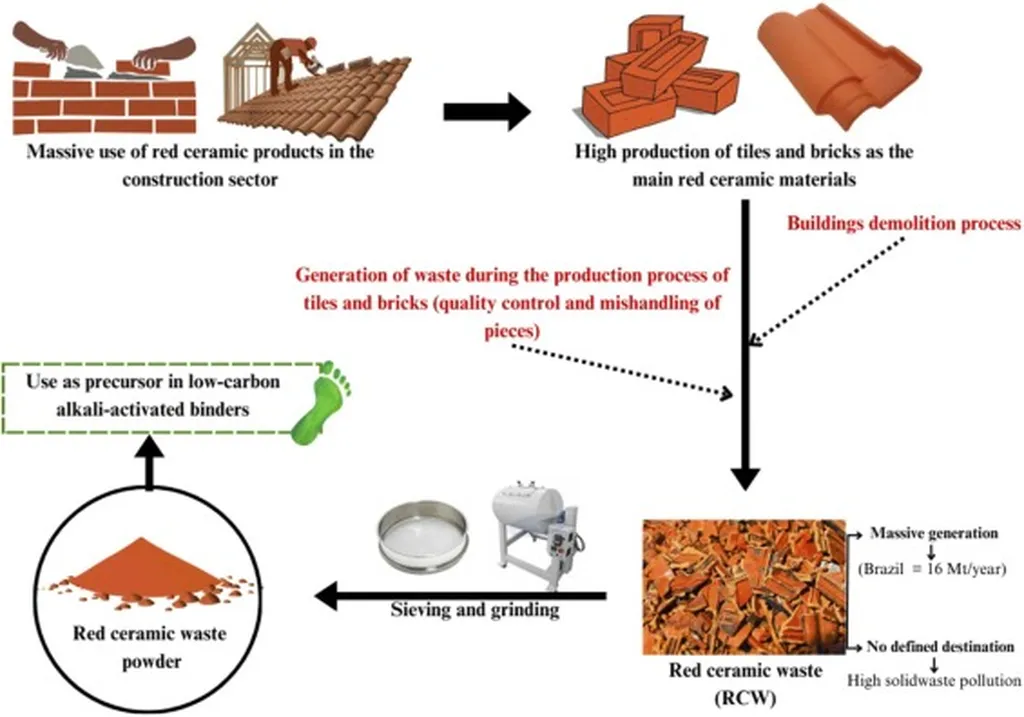In a significant stride towards sustainable construction materials, researchers have demonstrated the potential of red ceramic waste as a viable substitute for metakaolin in geopolymer production. This innovative approach, detailed in a recent study published in the *Revista IBRACON de Estruturas e Materiais* (IBRACON Journal of Structures and Materials), opens new avenues for reducing waste and enhancing the environmental profile of construction projects, particularly in the energy sector.
Geopolymers, known for their durability and low environmental impact, are increasingly gaining traction as an alternative to traditional cement. The study, led by Wendel Melo Prudêncio de Araújo, explores the feasibility of incorporating red ceramic (RC) waste—derived from the production, use, and demolition of ceramic construction materials—into geopolymer formulations. “The idea was to leverage the aluminosilicate-rich composition of red ceramic waste, which makes it a suitable precursor for geopolymer binders,” explains de Araújo.
The research involved developing five geopolymer formulations with varying concentrations of red ceramic waste, replacing metakaolin progressively. The formulations were cured under ambient conditions and subjected to mechanical property tests, as well as microstructural analysis using X-ray diffraction (XRD) and Fourier-transform infrared spectroscopy (FTIR). The findings revealed that geopolymers containing up to 30% red ceramic exhibited improved mechanical properties at 28 days, with a Si/Al ratio of 1.92.
One of the notable outcomes of the study was the observation that increasing the concentration of red ceramic extended the initial setting time by up to 75 minutes and reduced the geopolymer’s fluidity by 27.85%. “This extension in setting time can be beneficial for certain construction applications, allowing for more flexibility in the handling and placement of the material,” de Araújo noted.
The commercial implications of this research are substantial, particularly for the energy sector, where sustainable and durable construction materials are in high demand. By utilizing red ceramic waste, construction projects can reduce their environmental footprint while also potentially lowering material costs. The extended setting time and improved mechanical properties offer practical advantages for large-scale construction and infrastructure projects.
This study not only highlights the potential of red ceramic waste as a valuable resource but also underscores the importance of ongoing research into sustainable construction materials. As the construction industry continues to seek innovative solutions to reduce waste and enhance sustainability, the findings from this research could shape future developments in the field. The study’s publication in the *Revista IBRACON de Estruturas e Materiais* further solidifies its relevance and potential impact on the construction industry.
As the world moves towards more sustainable practices, the integration of red ceramic waste into geopolymer production represents a promising step forward. The research led by de Araújo not only provides a practical solution for waste management but also offers a blueprint for future innovations in construction materials.

